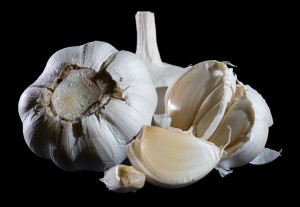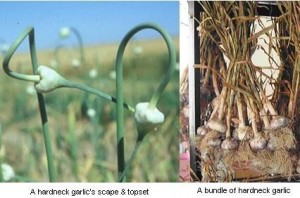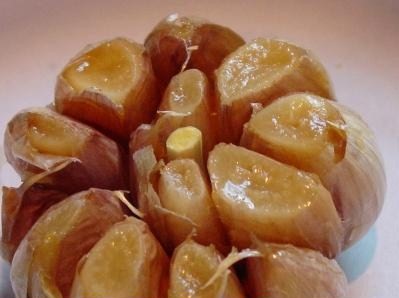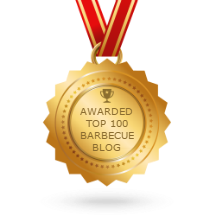One of the most widely used flavor enhancers in the world would probably be garlic. Often called the stinking rose, garlic has been popular for giving food its added savor and also providing medicinal remedies for thousands of years. Garlic is used in just about any country for just about anything, some even believe it to have spiritual powers such as the ability to ward off vampires (from Central Europe) and the endowment of immortality (black garlic, from Korea & China). Italians use it in their spaghetti, Arabs in their kabob’s garlic sauce, Asians for their stir-fry and Americans for their roasts. Personally, I love using garlic to marinate my steaks in.
Whatever use you may have for garlic, there’s a readily prepared form of it out there for each particular purpose. You can get them fresh, dried, roasted, peeled, chopped, powdered, in capsules and I could go on and on. What’s great about garlic is that it is also available year-round and is a staple in most grocery stores and markets. What most people don’t know is that there are a lot of garlic varieties out there and I’d like to share the many wonders of garlic with all of you today.
TYPES OF GARLIC

When we say garlic, the picture on the left automatically comes to mind and not many of us know that there are around 400 varieties of it. The most commonly cultivated and eaten form of garlic is Allium sativum which has two main sub-varieties: softneck & hardneck garlic.
Softneck garlic is more commonly found in supermarkets because it is easier to grow and can be stored for a longer period of time than hardneck garlic. Its bulb is formed by cloves around the central core covered by white papery skin. Softneck garlic stalks are also usually braided so you can hang a garlic bundle for storage. Silverskin and Artichoke garlic are two types of softneck garlic. Because Silverskin is the easiest garlic to grow and stays fresh longer, this is the variety most commonly found in supermarkets. Artichoke garlic has larger cloves and gives out a milder flavor. Its covering can sometimes come with purple blotches and tend to be coarser than that of the silverskin’s.

Hardneck garlics have fewer but larger bulbs than softnecks. Their shelf life is shorter than that of the softneck’s as their outer bulb has less wrapping and can sometimes not have any at all. They also grow with a “scape” or a stalk which coils at the top with small round bulbils at the end which are often referred as topsets or garlic flowers.
There are three main types of hardneck garlic. Rocambole garlic is usually tan in color and has up to a dozen cloves. Porcelain garlic comes with a white wrapper and comes with four large cloves. Purple stripe garlic is hardneck garlic that comes with bright purple markings.
Whatever garlic you choose to purchase, make sure you choose firm, plump bulbs with dry skin to ensure freshness. Soft and shriveled cloves may have been sitting in the store for a while so you’d want to steer clear of that.
CULTIVATION
One great thing about growing garlic is that it’s not attacked by pests and is very easy to grow all year round in mild climates. You can grow them in containers that are deep enough to make room for the bulbs or directly in the garden and they need little maintenance. According to Wikipedia, cloves can be planted in the ground about six weeks before the soil freezes and harvested in late spring in places with colder climates.
With its ease of cultivation, garlic is grown all around the world but China is the current largest producer. You can visit the Wikipedia article on garlic to see the world’s top 10 garlic producers together with the statistics. Here in California, there’s a city famed for its annual garlic festival held every last full weekend of July. Gilroy, California fames itself as the “Garlic Capital of the World” and comes up with various garlicky foods during their festival – they even have garlic ice cream!
GARLIC FOR COOKING

There are plenty of ways to prepare garlic and its aroma changes depending on the different cooking methods. They are usually used to add flavor to a dish but there are also some recipes which use it as a main ingredient. It is most commonly seen as a base for sautés, accompanied by its best friend – onion.
The easiest and most common way to remove the thin papery cover is by crushing the garlic clove with a knife or a garlic crusher and peeling the skin off. You can also cut off the base (the hard part of the garlic) and carefully peel the skin off if you want to keep your cloves whole. Crushed garlic gives out a more flavorful aroma as the oils of the garlic are released.
One of my favorite ways of cooking garlic is roasting the entire bulb by cutting off the top, dribbling a bit of olive oil on top and sticking it in an oven. This also gives out at aromatic flavor with the cloves having a soft, spreadable consistency.
Garlic cloves are also used to flavor oils, vinegar, butter, and other condiments. Crushed garlic easily infuses its flavor into liquid condiments just by keeping them in the bottle (for oil and vinegar). Butter can be flavored with garlic by mincing garlic cloves and whipping it up with butter.
Garlic is a great match for barbecue, beef, fish, pasta, seafood, etc. In Korea, sliced fresh garlic cloves are eaten together with their bulgogi. Some cultures also pickle young bulbs and shoots and eat them as appetizers.
GARLIC AS A HOME REMEDY
Garlic is popular for preventing heart disease, cancer and even lowering cholesterol. Most people don’t like the idea of popping a garlic clove in their mouth at it gives out a pungent smell. No need to worry, you can now get them in capsules from your pharmacy.
Garlic tea has been used to soothe coughs since the ancient times. The juice of the garlic helps dissolve mucus in the sinus cavities, bronchial tubes and lungs. It is also said that garlic can cure asthma, deafness, leprosy bronchial, congestion, hardening of arteries, fevers, worms and liver and gall bladder trouble though there are no clear scientific studies on this. You can visit http://www.earthclinic.com/Remedies/garlic.html to have a list of various garlic home remedies.
STORING YOUR GARLIC
Garlic is traditionally stored by hanging in an open area bunched together by braiding the stems (softneck garlic). It is best stored in a cool, dark place, away from moisture to make sure it would not sprout.
Some people keep their garlic in oil to produced flavored oil and preserve peeled garlic in wine or vinegar (kept in the fridge).
Unbroken garlic bulbs can last up to 8 weeks if stored well. If you have broken the bulbs, keep the cloves in the fridge and they can last from 3-10 days. Exposed cloves tend to get soft and shrivel after a few days of being left out and they also lose flavor.
GARLIC TRIVIA
- Finally, I want to leave you with some fun garlic trivia I found over the net. Enjoy!
- Garlic and onions are among the oldest cultivated food plants. Their culinary, medicinal and religious use dates back more than 6000 years.
- California produces more than 250 million pounds of garlic each year. One farm in Monterey County (near Gilroy “The Garlic Capital of the World”) plants 2000 acres of garlic and produces almost 25 million pounds annually.
- China produces 66% of the world's garlic, 13 billion pounds in 2002. Next are South Korea (5%), India (5%), and the U.S. (3%).
-
The longest continuous string of garlic is 123 feet. It is found in Catsfield, England.
- There is an all-garlic restaurant in Stockholm where they offer a garlic cheesecake.
-
There is an all-garlic restaurant in San Francisco where they offer a garlic ice cream. The name of the place is a nickname for garlic, The Stinking Rose.
-
After eating a large quantity of garlic, a person will usually have halitosis. Their sweat and excreted oils will also smell like garlic. If an extremely large amount of garlic has been consumed, the person's mucus, vaginal discharge, dandruff, and even earwax will also smell like garlic. Washing the body with soap will not take away the scent, although perfumes will mask it. The smell usually fades over the course of several days.
- Garlic is pictured on ancient Egyptian tombs from 3,000 B.C. and is mentioned in the Old Testament, by Herodotus, Aristophanes, Virgil and Dioscorides. It is said to have grown in the left footprints of Satan when he left the Garden of Eden.
- Aristotle, Eleanor Roosevelt, Pliny, Hippocrates, Dr. Albert Schweitzer, Moses, Aristophanes, Homer, Emperor Nero are famous garlic lovers.
-
Supposedly, stuffing a clove of garlic in your nostril when you have a stuffy nose will help in the healing process. But don’t fall asleep as you may inadvertently suck the clove down your throat and choke.
-
Due to the unavailability of vampires, the bloodsucking leech was used as a stand-in to determine if garlic does repel bloodthirsty creatures. Unfortunately, it instead seemed to attract them. The leeches used an average of 14.9 seconds to attach themselves to a hand covered with garlic, while it took them 44.9 seconds to start sucking blood from the clean one.
Reference:
http://en.wikipedia.org/wiki/Garlic
http://www.garlic-central.com/varieties.html
http://www.earthclinic.com/Remedies/garlic.html
http://www.therecipefinder.com/garlic.html





